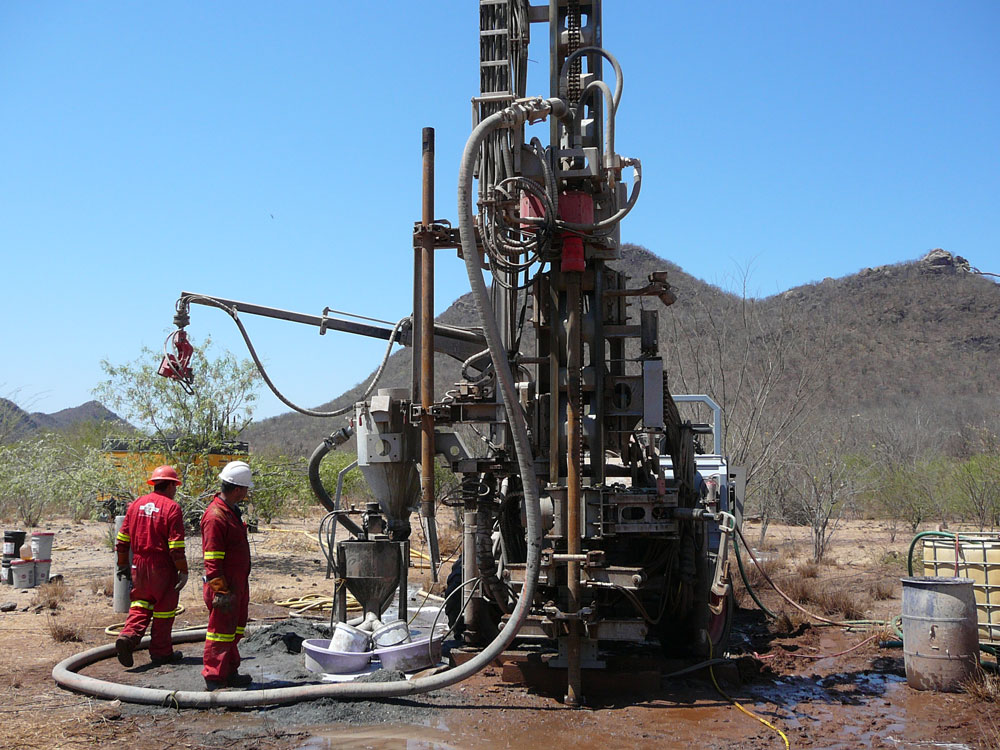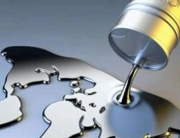Due to its geopolitical prominence, Iran has been the focus of great-power policies during the entire course of modern history. The Russian-British rivalry over Iran that began in the mid-1800’s lasted a century. With the end of World War II, Britain’s role in the region diminished, and the vacuum was filled by the United States.
Iran gained full sovereignty over its territory by 1947. Two major factors shaped U.S. policy on Iran in the post-war period. First, Iran’s geopolitical significance made it even more important for the United States to contain the USSR on its southern flank.1 Second, Iran possessed rich oil and gas resources.2 In order to control the flow of this strategic commodity to Western economies and military forces, the United States determined to maintain “friendly” regimes in Iran. Prime Minister Mohammad Mossaddeq, who nationalized the country’s petroleum reserves in 1951, was allegedly toppled by the CIA.3 With Shah Reza Pahlavi’s return in 1953, Iran regained its status as the United States’ number one ally in the Middle East. Under American protection, Iran became a regional power in the period leading up to the Islamic revolution in 1979.
With the Islamic revolution, the United States lost its closest ally in the region. What made this even more dramatic was the Soviet invasion of Afghanistan in the same year. Suddenly, the United States lost its two most important intelligence areas against the USSR, faced the signifi cant risk of disruption of the oil supply from the region, and faced the serious strategic threat of a destabilization in the region. Iraq perceived the situation as a great opportunity to regain the territories ceded to Iran in 1974. With U.S. support, Iraq attacked Iran in September 1980. The Iran-Iraq War ended in 1988, after ruining both countries.4 In the following period, two important events shaped the course of regional politics: first, Iraq’s invasion of Kuwait in 1990, and the gulf war that followed, and, two, the fall of the USSR the next year.
The new situation offered both risks and opportunities for Iran. On the one hand, Iran aimed to increase its control of the newly independent republics in Central Asia by using religion as a tool of influence. On the other hand, Washington supported Turkey’s greater role in the region and excluded Iran from oil and gas projects. In return, Iran approached Russia and Armenia for support on regional matters in the post-Cold War period. Iran’s support for radical groups in the Middle East, its sabotage of the Middle East peace process, its establishment of a partnership with Syria, and its demonization of Israel were other factors that contributed to tense relations with United States.5 In this context, Washington continued to formulate policies, such as “dual containment” to contain Iran and thwart the military and political influence of both Iran and Iraq.6
The September 11, 2001, attacks and subsequent shifts in American foreign policy brought another dimension to U.S.Iranian relations. Although the overthrow of the Taliban regime in 2002 and Saddam Hussein in 2003 eliminated the Iranian regime’s two major regional rivals — Afghanistan and Iraq, respectively — it also caused the country to be encircled by U.S. forces on the east, west and north. In addition, energy and military agreements between the United States and the Central Asian republics made Iran feel even more contained. With the exposure of Iran’s secret nuclear program in 2002, relations between the two countries deteriorated greatly. Some experts believe the threat posed by the United States caused Tehran to secretly accelerate its nuclear program.
EARLY HISTORY
Iran’s pursuit of a nuclear capability goes as far back as the 1960s. Ironically, the United States was the fi rst country to help Iran gain nuclear technology. It supplied a five-megawatt research reactor to Iran that began operation in 1967. Iran signed the Nuclear Non-Proliferation Treaty (NPT) in 1968 and ratified it in 1970.7
The Iranian nuclear program was ambitious from the beginning. Oil prices soared, especially after the 1973 Arab-Israeli war, allowing the Iranian government to invest more in nuclear-energy development. Under Shah Muhammed Pahlavi’s administration, the Iranian government made deals with German and French contractors. Germany’s Kraftwerk Union (a subsidiary of Siemens) agreed to build two 1,200-megawatt nuclear reactors at Bushehr, and a French company agreed to supply two 900-megawatt reactors. The Massachusetts Institute of Technology (MIT) also signed a contract with the Atomic Energy Organization of Iran (AEOI) to train the first cadre of Iranian nuclear scientists in 1975. Iran’s domestic nuclear cycle included an advanced nuclear research center and the development of uranium mining and ore processing.8
The United States also supported Iran’s plans to build a nuclear-energy capacity. According to declassifi ed confidential U.S. government documents,9 the shah’s government planned to purchase eight nuclear reactors from the United States for electricity generation purposes. In July 1978, only seven months before the Islamic revolution, the final draft of the U.S.-Iranian Nuclear Energy Agreement was signed. This agreement was designed to facilitate Iranian-American nuclear cooperation, including the purchase of equipment and material from the United States and help in the search for uranium deposits. The political upheaval preceding and following the revolution halted the Iranian nuclear program. By 1979, one nuclear reactor, Bushehr 1, was 90 percent complete, with 60 percent of its equipment installed; Bushehr 2 was 50 percent complete. The first prime minister after the revolution, Mehdi Bazargan, concluded that Iran did not need nuclear energy and discontinued the project.10
The second factor that prevented Iran from developing a nuclear capacity earlier was the Iran-Iraq War of 1980-88. Iraq bombed Iran’s nuclear reactors and research centers, hitting the two reactors under construction in Bushehr six times. With the end of the war, Iran’s need for electricity signifi cantly expanded. According to the official Iranian line, this led President Hashemi Rafsanjani’s government to review its policy and decide to continue with the quest for nuclear-energy projects. The Iranian government sought international technical assistance and collaboration to complete the nuclear facilities from Germany, Argentina, Spain, the Czech Republic, Italy and Poland.11 However, these attempts were prevented by the United States as a part of the dual-containment policy.
In 1995, after long negotiations, an Iranian-Russian agreement over Iran’s nuclear program was signed. It called for finishing the reactors at Bushehr, which, under the supervision of the International Atomic Energy Agency (IAEA), would have been capable of producing a maximum of 180 kg of plutonium per year. According to the agreement, Bushehr 1 was supposed to be completed by 1999, but it is still only partially finished. Russia annonced it will finish the Bushehr power plant in 2009, according to reuters (November 27, 2008). The agreement also stipulated that Russia would provide further technical assistance and the training of Iranian nuclear scientists.12
Russian completion of the Bushehr reactors is an immensely complex task. Back in the 1970s, the Kraftwerk Union did not provide any technical documents for the installation of the reactors. In addition, Russian and German reactors are significantly different technologically. The Iranian nuclear program is highly dependent on foreign technology transfer, and it seems that it will continue to be.13 Another point that raised concern about Iranian intentions has been the rapid developments in Iranian missile delivery capabilities. Iran’s middle-range ballistic-missile capabilities can reach all the Middle East and Eastern Europe. Israeli and American analysts, in particular, suggest that the development of these capabilities poses a security threat to the region. Iran’s efforts to develop missile capabilities in parallel with its nuclear program have led many analysts to believe the latter is intended for military purposes rather than energy production.
THE CURRENT CRISIS
The current crisis began in August 2002, when an Iranian exile opposition group, the National Council of Resistance (Mujahedin-e Khalq), accused Tehran of hiding a uranium-enrichment facility at Natanz and a heavy-water plant at Arak. The existence of the sites was confirmed by satellite photographs. This was followed by Iran’s announcement that its nuclear program had peaceful aims and that it would allow IAEA inspections.14 In November 2003, Iran suspended its nuclear program and announced it would allow stricter IAEA inspections. The IAEA concluded that there was no evidence of the program, but the United States insists that Iran ultimately aims to produce nuclear weapons, particuarily as the country possesses enormous fossil-fuel reserves and does not need nuclear energy in the short and medium term. In addition, three other factors discredit the “peaceful nuclear energy” argument: (1) Iran kept its nuclear program secret until it was discovered in 2002; (2) there are alleged military connections and weaponization studies connected to the nuclear program as well as missile development; (3) and from an economic perspective, indigenous enrichment is not logical.15
To mediate between Washington and Tehran, the foreign ministers of France, Germany and Britain (the EU3) visited Iran in October 2003. They asked Iran to stop enriching uranium and suggested that it sign an additional protocol to the NPT and provide full cooperation with the IAEA. The EU3 offered economic concessions, if these conditions were met. The rest of the world, including the United States, supported the EU3 initiative and a diplomatic solution to the problem. In August 2005, Iran rejected the proposal, and the talks were stopped. In fall 2005, Iran resumed uranium conversion at its Isfahan plant, and an IAEA resolution declared it in violation of the NPT. During fall 2005, Iran was encouraged to resume talks with the EU-3, to refrain from enrichment at other nuclear facilities and to halt enrichment at the Isfahan plant.
In January 2006, Iran broke the IAEA seals at its Natanz facility, and the IAEA referred the matter to the UN Security Council (UNSC). Iran also declared that it had resumed its uranium conversion at Natanz. On March 30, 2006, the UNSC demanded that Iran suspend uranium enrichment within 30 days. In April 2006, President Ahmedinejad announced that uranium enrichment had been successfully achieved. As a response, on December 23, 2006, the UNSC unanimously adopted Resolution 1737, imposing sanctions specifically on the Iranian nuclear program, calling for Iran to suspend all enrichment-related and reprocessing activities, and to take all steps required by the IAEA to ensure that its program is for peaceful energy production only. Iran did not comply and has continued with its enrichment activities. On March 24, 2007, the UNSC unanimously accepted Resolution 1747 tightening sanctions against Iran and giving Tehran 60 days to suspend its uranium enrichment program. Iran did not comply, declaring that it had begun “industrial scale” enrichment.16 As of early 2009, the IAEA estimates that industrial-scale enrichment involving about 4,000 fuel rods is ongoing.17
To summarize, Iran is still a member of the NPT and, under the terms of this agreement, member states have the right to develop a nuclear program for peaceful purposes, including enrichment. This is why Iranians repeatedly emphasize that they are simply doing what they are allowed to do: enrichment. However, the fears of the United States, the EU and regional actors are not all groundless. As the IAEA has confirmed, Iran maintained a secret enrichment program for 18 years, until it was discovered in 2002. Even though Iran has categorically denied allegations that its program is for producing nuclear weapons, Iranian officials have not convinced others, most of all the United States.





Leave A Comment